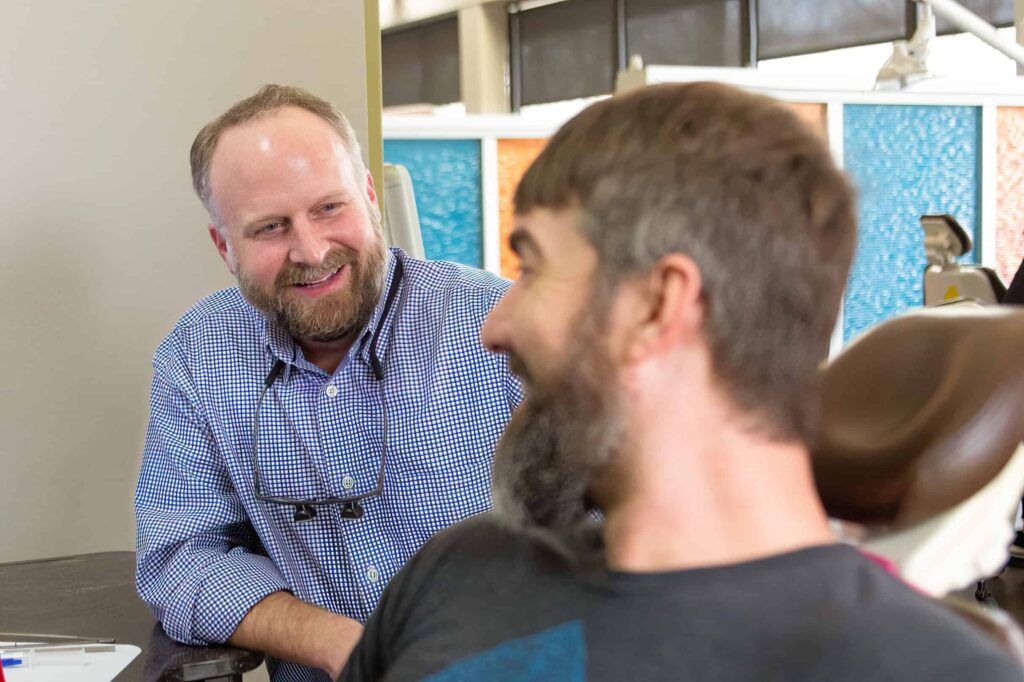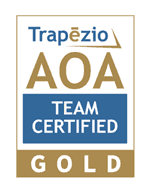Does your child have a tooth that hasn’t come in when it should, or came in somewhere it shouldn’t? Do they have gums that appear swollen above other teeth? They may have impacted teeth, and this could become a significant problem if left untreated.
Impacted teeth can cause damage to your child’s jaws and other teeth, and they need to be addressed as soon as possible. You may not even realize the teeth are impacted. It’s something your dentist or orthodontist can find with dental X-rays. But can you get braces for impacted teeth? Does Invisalign fix impacted teeth? Smith & Davis Orthodontics has the answers!

What Are Impacted Teeth?
Human beings have two sets of teeth. The first set consists of the baby teeth, also known as milk teeth, primary teeth, or deciduous teeth. The second set is the adult teeth, also known as the permanent teeth.
Our jaws are designed to allow the baby teeth to erupt first, with the permanent teeth lined up to follow behind them once the baby teeth start falling out, typically around age 6. The permanent teeth are supposed to drop into the hole created by the recently lost baby teeth.
On rare occasions, the permanent teeth do not erupt where they should. They may get trapped behind other teeth, or they may shift sideways. They may show up above or below the other teeth. They may even break through the palate, or the roof of the mouth. These are impacted teeth.
The most commonly impacted teeth are:
- Canines — the pointed teeth on either side of your lateral incisors
- Premolars — also called bicuspids, these are the permanent teeth between the canines and the molars (baby teeth don’t have bicuspids)
- Wisdom teeth — the third molars and the last teeth to erupt, usually between the ages of 17-20.
Impacted teeth tend to occur more often in the upper teeth than in the lower ones. Wisdom teeth were once regularly removed from braces patients to prevent impaction or movement of the teeth after braces, but now they are evaluated first before removal is considered.
Why Are Impacted Teeth Bad?
Impacted teeth can do a lot of damage, which is why it’s so important to take care of them as soon as possible.
One of the most significant problems that impacted teeth can cause is root resorption. When it’s time for the baby teeth to fall out, the body breaks down the root of the tooth and reabsorbs it, allowing the tooth to come out without doing any damage to the jaw.
Impacted teeth can press against the roots of permanent teeth. This can trigger root resorption, causing the root of the permanent tooth to break down. That means you can lose your permanent tooth because of impacted teeth. Unlike the baby teeth, there is no tooth waiting to take the place of the permanent one.
Impacted teeth can also push permanent teeth out of position. They can do this by pressing against the root, but they can also press against the teeth themselves if the impacted teeth are partially erupted. This causes your teeth to become crooked, making it harder to eat, speak, or clean them.
Impacted teeth can cause swelling and inflammation in the gums. It can also cause gaps in the gums or surrounding tissue if the tooth partially erupts. This can allow food and bacteria to enter the gums or surrounding tissue, potentially causing infections.

Signs of Impacted Teeth
What are some of the signs of impacted teeth? Impacted teeth may not always show signs, as they may be fully embedded in the jaw. If they do show signs, the impacted tooth symptoms include:
- Swelling of the gums
- Redness or irritation of the gums
- Movement of surrounding teeth
- Loosening teeth
- Bulging on the gums where the tooth might erupt
- Partial eruption of the tooth in the wrong location
- Pain in the gums or teeth
Impacted tooth pain relief can include over-the-counter medication or rinsing your mouth with warm salt water. This should be temporary, as pain from your impacted teeth is a sign that you need to address them right away.
Orthodontics for Impacted Teeth
You’re probably wondering if there are orthodontics for impacted teeth. Can braces fix an impacted canine tooth? Will Invisalign help an impacted premolar? How difficult is it to remove impacted wisdom teeth compared to impacted canines?
How orthodontics fixes impacted teeth depends on several factors, including which teeth are impacted, whether the tooth has erupted, and how the impacted teeth have affected surrounding teeth.
In the easier cases, we use braces to move the erupted teeth into their proper positions. This may include using power chains to put a bit of extra “oomph” into that tooth’s movement. More challenging cases may involve minor surgery to the gums.
In some cases, we may need to cut away part of the gums to expose the tooth more clearly, allowing us to move it more easily. In other cases, we may need to attach a special chain to the tooth to help it erupt and move into place.
For molars (wisdom teeth), we can use a similar method but with plates. The plates are added to help the wisdom tooth sit upright and erupt properly, or at least well enough to use braces to complete its journey into its proper position.
Nearly all impacted tooth cases will use braces. Invisalign or clear aligners, such as Clarity Advance, do not have the necessary pull to move impacted teeth properly. It’s only in sporadic, minor cases that we use clear aligners for impacted teeth.
Impacted Tooth Treatment in Rogers, AR
Impacted teeth can have significant and detrimental effects on your other teeth and your oral health. The sooner you take care of your impacted teeth, the less chance you will have of damaging other teeth. This is one reason why we stress the importance of an early orthodontic evaluation, usually by age 7.
Do you suspect your child has impacted teeth, or do you have impacted teeth? If you need to treat your impacted teeth in Rogers, AR, schedule an appointment with Smith & Davis Orthodontics. We can offer solutions that can ease your pain and save your smile!






